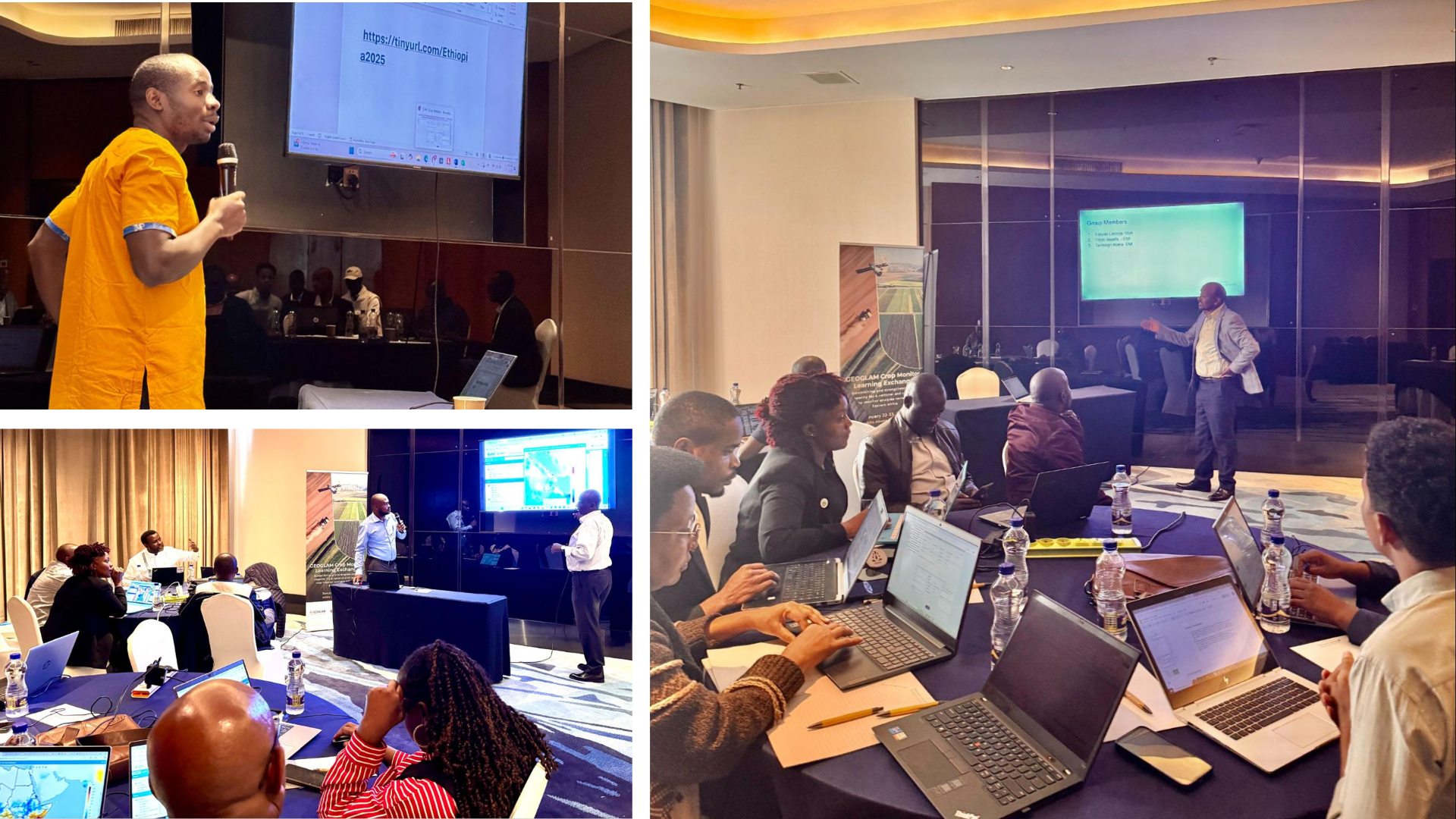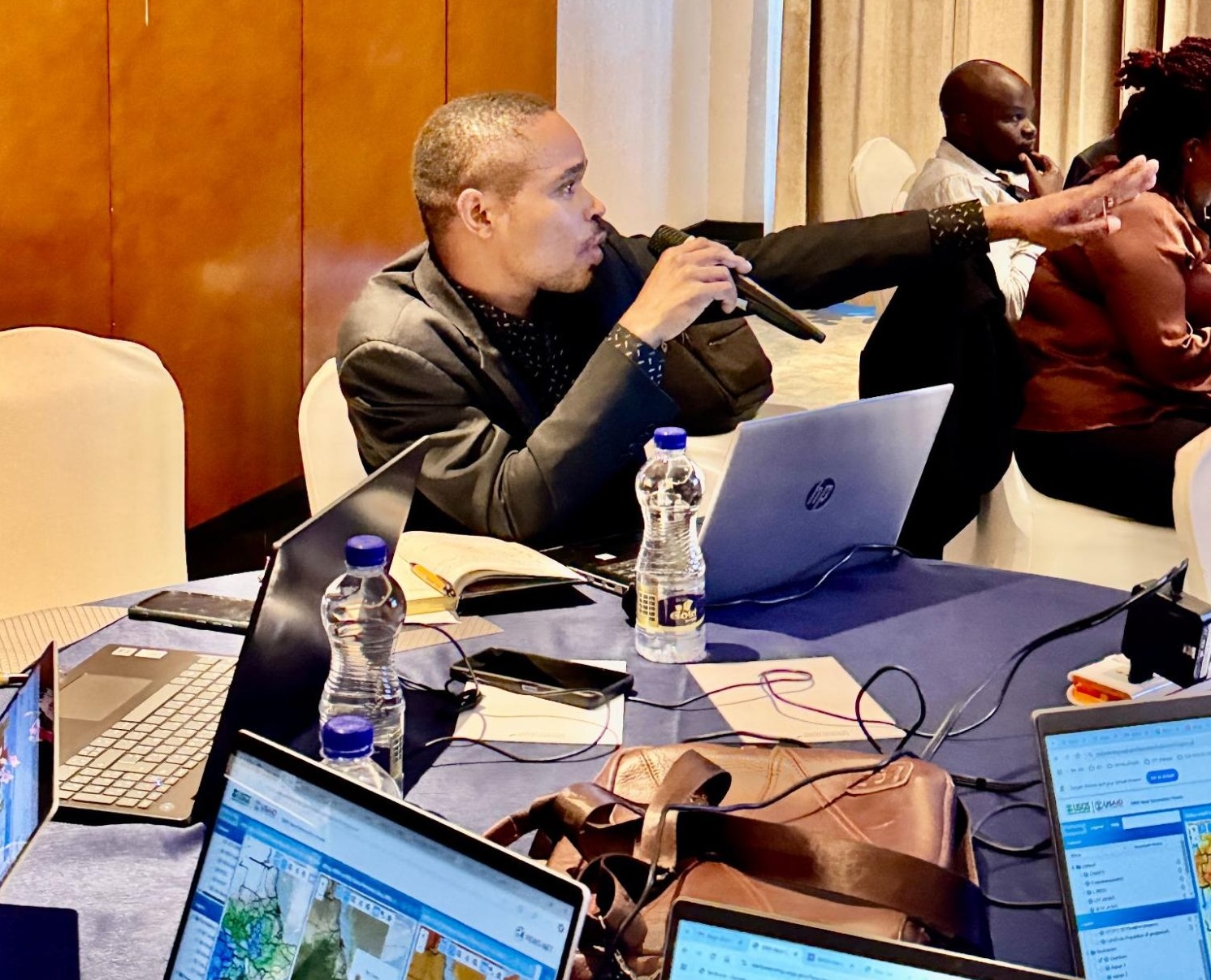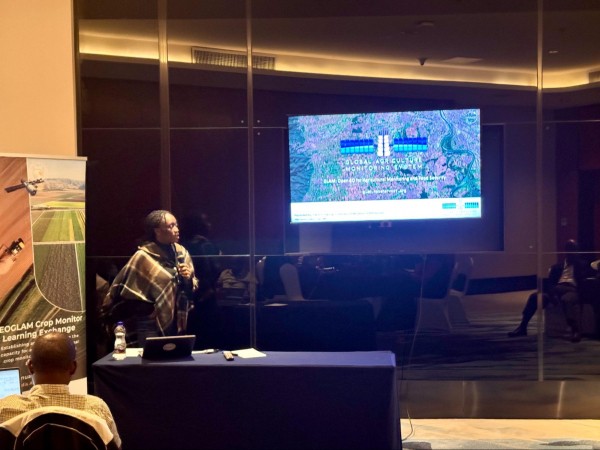NASA Harvest and Partners Strengthen Agricultural Monitoring in Ethiopia
Hands-on sessions integrate geospatial technology with local expertise.
Department of Geographical Sciences-led NASA Harvest and partners hosted a two-day training session on Jan. 22 and 23 in Addis Ababa, Ethiopia. Held as a side event at the 69th Greater Horn of Africa Climate Outlook Forum (GHACOF), the training equipped national experts with cutting-edge tools to enhance food security monitoring across East Africa.
About 25 specialists, including national focal points from six IGAD Climate Prediction and Applications Centre (ICPAC) member states and representatives from agriculture ministries and meteorological agencies, took part. The initiative, conducted in collaboration with the International Center for Tropical Agriculture (Alliance Bioversity-CIAT), the Group on Earth Observations Global Agricultural Monitoring (GEOGLAM), and ICPAC, aims to bridge critical data gaps in rapid crop assessments. Participating countries included Djibouti, Ethiopia, Somalia, Tanzania, South Sudan, Sudan, Uganda, Burundi and Zambia.
 Training participants from six IGAD countries, a Zambian meteorologist and facilitators from Alliance Bioversity-CIAT, IGAD and UMD NASA Harvest.
Training participants from six IGAD countries, a Zambian meteorologist and facilitators from Alliance Bioversity-CIAT, IGAD and UMD NASA Harvest.
The training covered advanced Earth Observation techniques to improve agricultural monitoring. Faculty specialist Diana B. Frimpong at GEOG introduced GEOGLAM’s Crop Monitor initiative and NASA Harvest’s Global Agricultural Monitoring System (GLAM). Experts from partner organizations—including Sande Stephen Ngondi (CIAT), David Ongo (IGAD), Gamoyo Majambo Jarumani (CIAT), Oliver Kipkongei (IGAD) and Eugene Kayijamahe (IGAD)—led sessions on Earth Observation tools such as the East Africa Agriculture Watch (EAAW) platform and the Crop Monitor system. Participants learned to analyze crop conditions using a combination of geospatial data and local knowledge.

Experts lead sessions during the Crop Monitoring Training in Ethiopia. Top left: David Ongo (IGAD) conducts a session on crop assessment tools. Bottom right: Stephen Sande (CIAT) addresses participant challenges.
Hands-on working sessions allowed participants to apply these skills, conducting real-time assessments of crop conditions in their respective countries. Each country's cooperation feeds into the development of the Eastern Africa Regional Crop Monitor Bulletin, an advisory that tracks and analyzes the status of crops throughout East Africa. This advisory provides critical insights into crop health, potential hazards like drought and flooding, and expected yields—helping inform early warning systems for food security.

“This training strengthens the ability of national focal points to assess and report on crop conditions efficiently,” said B. Frimpong. “It’s a vital step in improving food security decision-making across the region.”
Participants expressed strong support for the initiative and called for continued cross-country data sharing to enhance agricultural monitoring efforts.
Main image: Frimpong (UMD) presents on satellite-based monitoring systems. Images courtesy of Diana B. Frimpong and ICPAC
Article by Renata Johnson
Published on Tue, 02/04/2025 - 09:40


